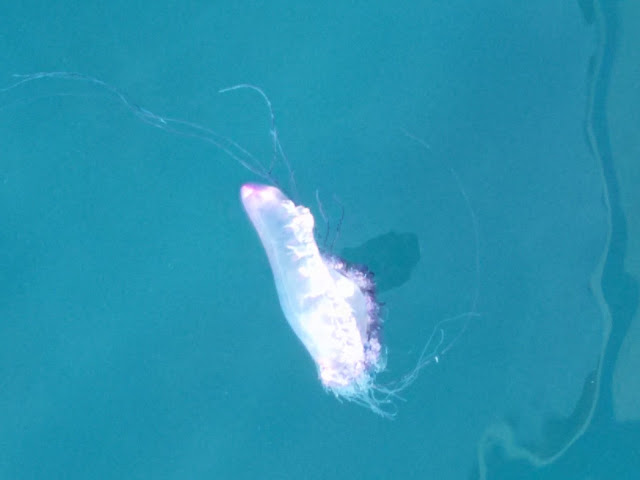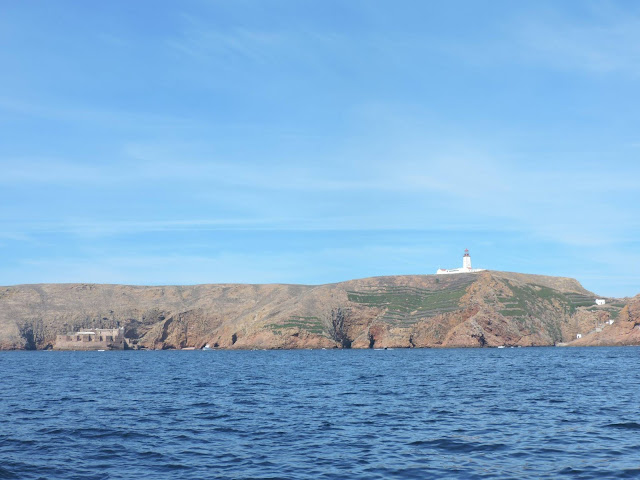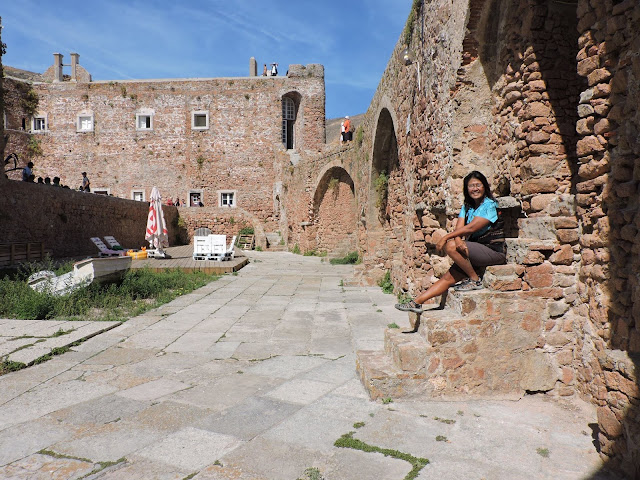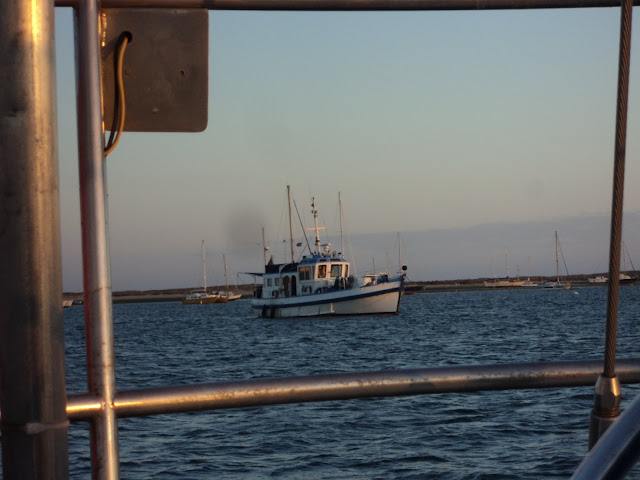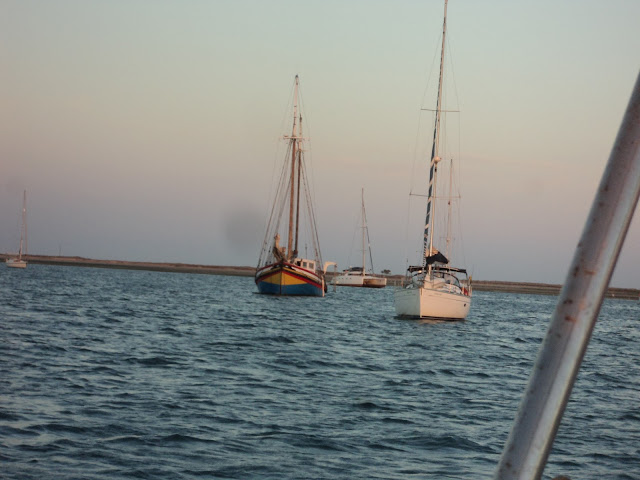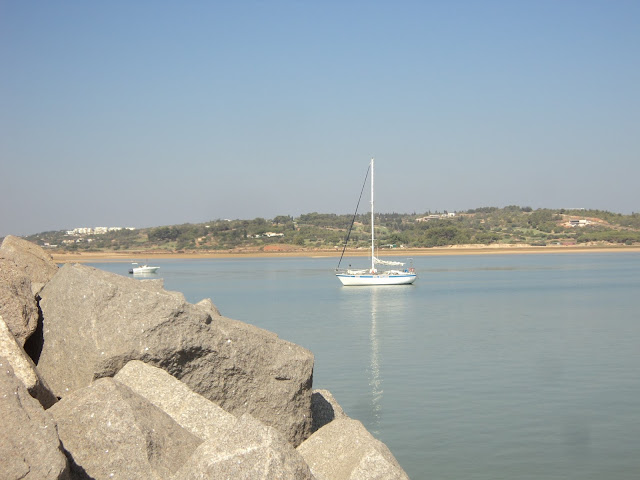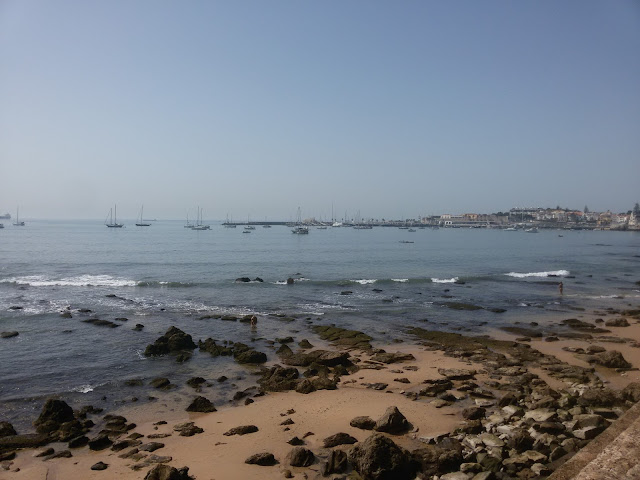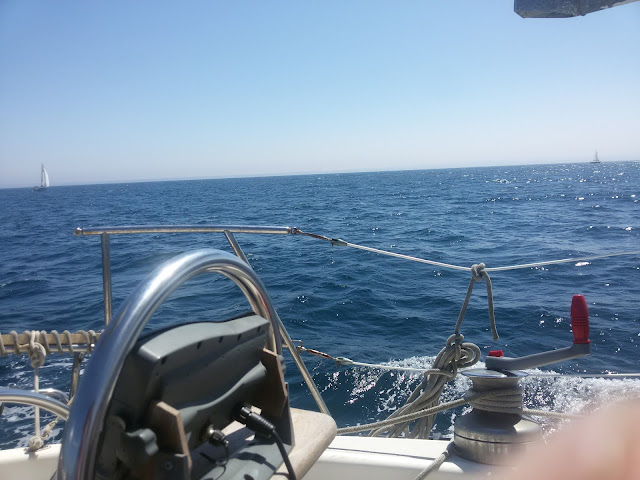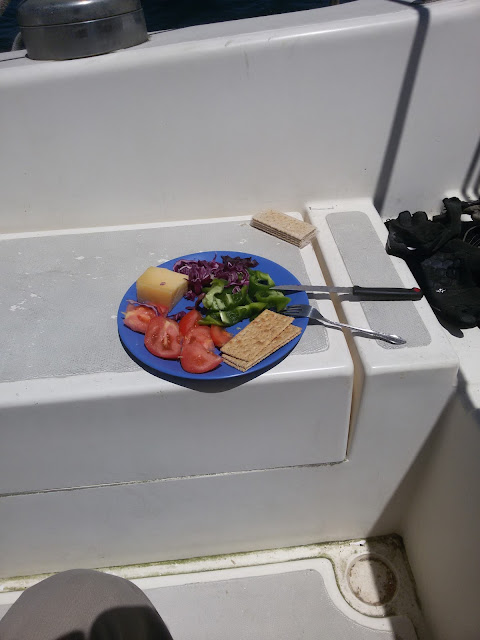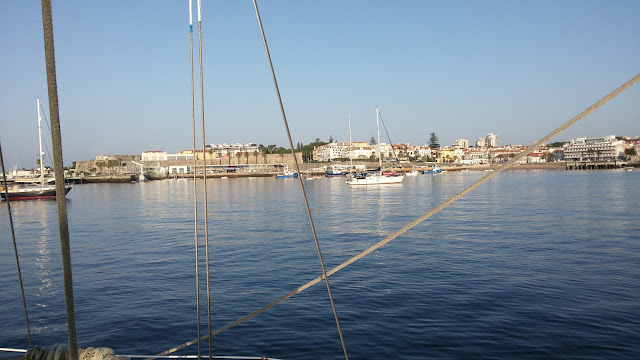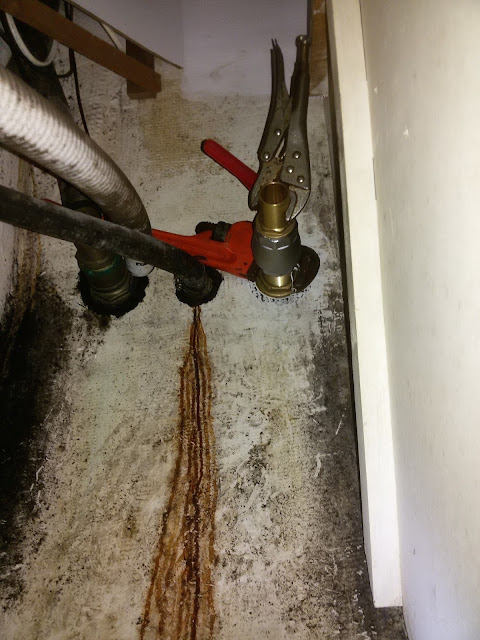Purely out of boredom, I made three New Year's resolutions, and I'm glad I did:
This happened during a trip to Berlengas with my brother Cesar, his partner Kathleen, my nephew Justin, and Nancy and Drew from Canada.
- Exercise arduously on a regular basis, rather than off and on. (I'm sticking to it.)
- Spend more time on the boat. (I'm starting to do it.)
- Buy only what I need. (I bought a Rollei 415 action cam and a 32 GB card for 100 euros. Am I sticking to it? Sort of.) Alright then, I need to make another resolution.
- Shoot more films.
This was my first rushed and disastrous attempt at underwater filming (I promise I'll have something better soon). I had my phone in hand running an app that allows me to see what the camera is filming and to control it using a WiFi connection. As soon as the camera went underwater, plunk, the WiFi connection died. The app works great out of the water though, and so does the camera. I'm looking forward to mounting it on the stern rail on my next wet and wild sail at Cabo Raso or going past Sagres. I still have my Toshiba camcorder for good weather conditions.
Hopefully I can now inspect the boat's prop, the ocean floor, and whether the anchor is properly set - if it's not too deep - and other exciting stuff. I'll practice at the marina. Owning a 12-meter boat is a real cool way to spend all my money, time and to never grow up and become bored!
I didn't shoot a better underwater scene because I rushed off to help Manuel remove his masthead fitting. We motored his boat to the fishing dock where a cherry picker made the job easy.
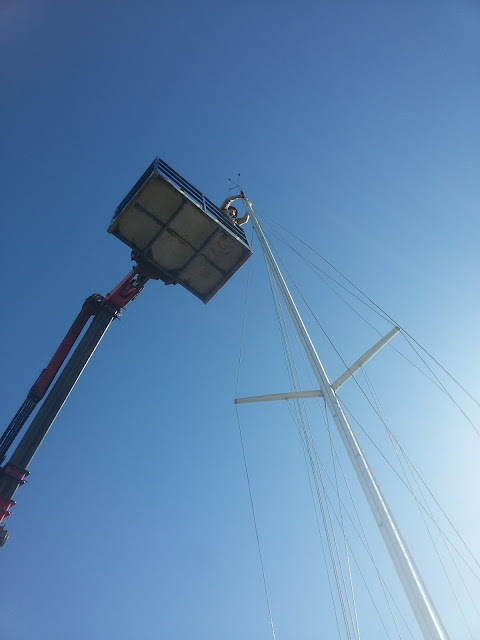 |
| I was down on the boat but, in retrospect, should have been up there too holding the mast steady allowing him to work with both hands. |
The story goes like this: he ordered a new full-battened mainsail but, for a mysterious reason, the sailmaker designed a huge roach (the back part of the sail). It overlaps the backstay and makes tacking very difficult, not to mention that it would eventually destroy the sail. Since the extra roach makes the boat sail like a bat-out-of-hell, Manuel immediately fell in love with it and is now building a very long masthead fitting to position the backstay farther back.
Meanwhile, I'm redoing Jakatar's aft berth because a leak (or two) caused a lot of rot to the mostly unpainted/unvarnished decorative wood panels. Does it make sense to have ugly decorative panels? I think I'll order another two komacel sheets. Komacel never rots, looks professional (if I don't screw it up) and is maintenance free. Dish out another 200+ euros and the privilege of doing more slave work for the voluptuous mistress.
 |
| The ceiling panels at the back are rotten. I painted the side panels years ago, but not the backs, which got mushy and caused the visible bulge. It's all garbage, komacel is the way to go. |
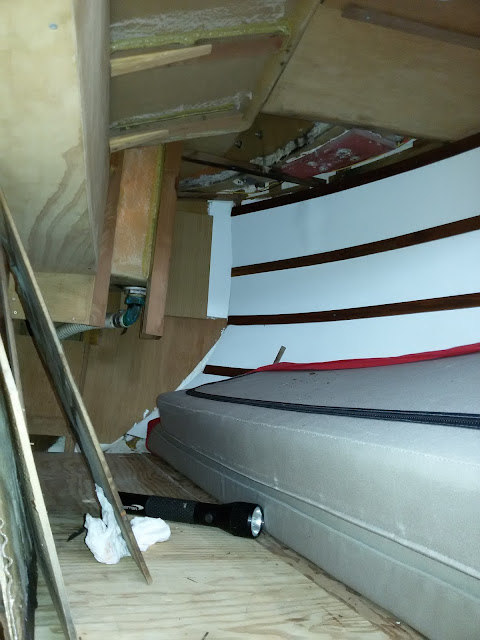 |
| In the process of removing the old panels which I'll use as templates. |
Finally, just in case you're not totally bored yet, I think I'll add a picture of a Portuguese man o' war, also known as the man-of-war, blue bottle, or floating terror, which floated by Jakatar while anchored at Berlenga Island, just as I was musing about whether to dive in and check the propeller for barnacle growth.
Later, after Googling it to confirm that it really was the "floating terror", I read that you're supposed to notify the authorities immediately after spotting one. The wind blew it right up to the boat and toward the tip of the island where there is no beach. Didn't hear any terrifying screams all afternoon, so I assume nobody got attacked.
This happened during a trip to Berlengas with my brother Cesar, his partner Kathleen, my nephew Justin, and Nancy and Drew from Canada.
